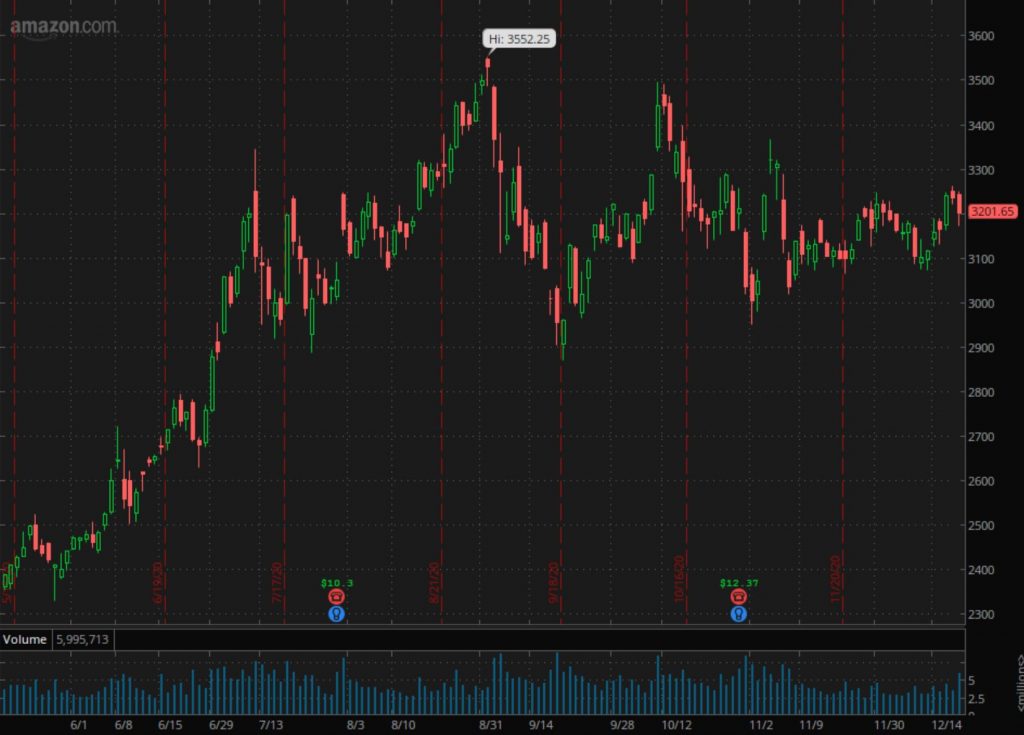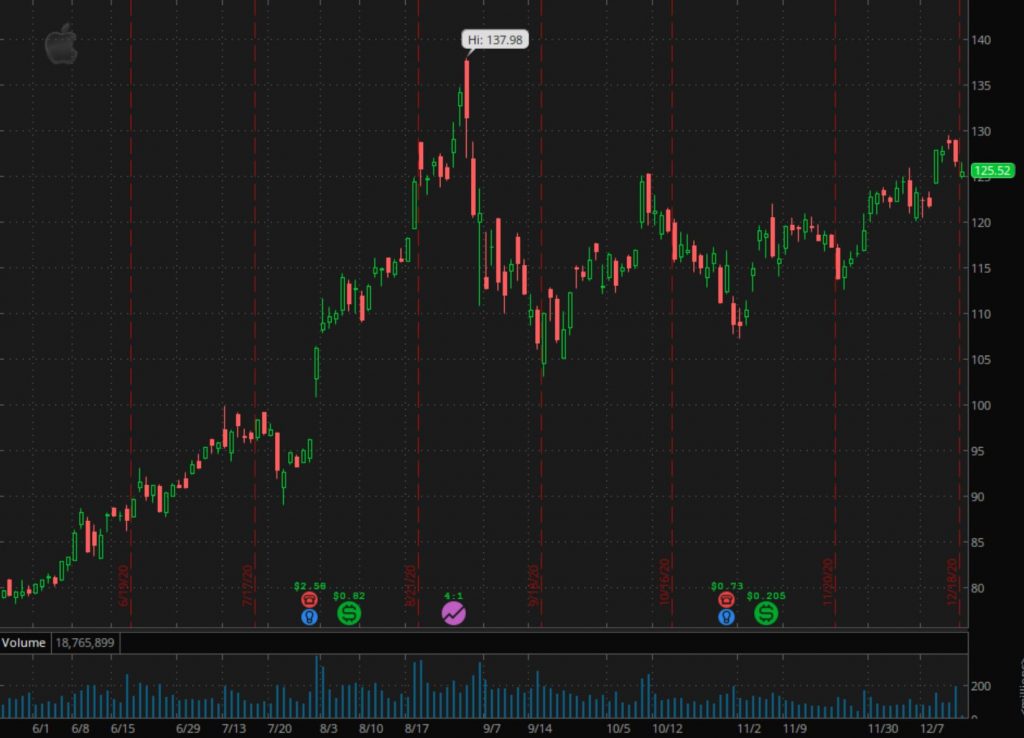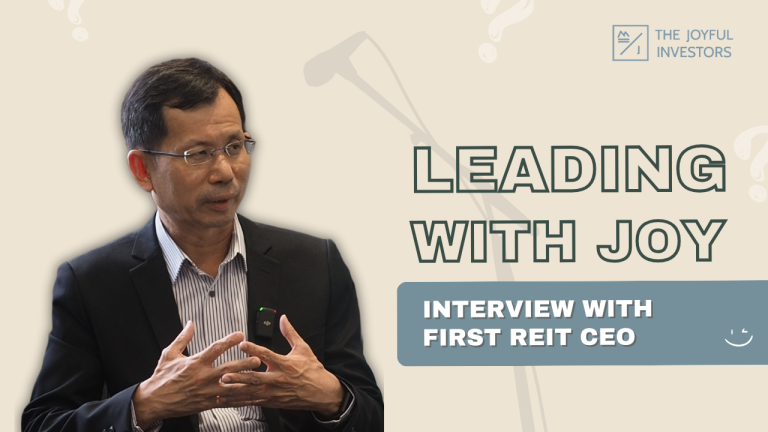Everybody has differing views on what is considered as a “good” price in terms of investment stocks. Some would consider $1,000 per share as “value-for-money” while some might never consider buying a share that high of a price. However, price alone does not indicate the true value of a stock. This is a common mistake made by beginner investors where they correlate the absolute price of a stock to its value. So what makes a company’s stock worthy buying despite the price tag?
Earlier on, I had a conversation with a friend where I shared how I recently bought Amazon stocks because the price dropped to a level that is below its intrinsic value. But my friend had a differing view. He thinks that the Amazon stock is very expensive which is why he did not consider buying despite retracement of the stock prices. At a glance, buying a stock at a price of over $3,000 might seem foolish. In fact, Amazon is one of the top 10 stocks with the highest traded stock price right now! However, this is a common mistake made by many, especially those who have just started investing. There is a misconception of what is considered “cheap” and “expensive” in investing.
Let’s begin by comparing 2 examples:
Amazon stocks vs Apple stocks
Amazon stock was consolidating at around US$3,000 – US$3,200/share in October and November 2020. Apple stock, on the other hand, was trading between US$105 – US$120/share during the same time frame. Both stocks retraced to their previous support levels. Due to both of them being a tech stock, they have very similar stock chart shape and price movement.

Extracted from: TD Ameritrade Thinkorswim

Based on your current knowledge and judgement; which stock would you have bought if you were looking to add some stocks to your portfolio at that time? Do you find yourself more inclined to choose APPL? Many retail investors decide on which stock to buy based on the absolute trading price of the stock. Like in our example, if a retail investor sees that both APPL and AMZN stocks have retraced during the same period, chances are that the retail investor will choose to buy APPL stock as it is seen as ‘cheaper’ due to the lower absolute stock price.
Although, what if I tell you that AMZN stock’s intrinsic value is around US$3,400 while APPL stock’s intrinsic value is about US$85. With this new knowledge in mind, would you have changed your decision?
Intrinsic value? There’s such a thing? Isn’t the value of the stock just its price?
Every stock has what we call an intrinsic value. It is defined as the fundamental value of the stock, or in layman’s terms how much the stock is really worth.
Comparing the intrinsic value of the stock against its current stock price allows us to see if the stock is undervalued, fairly valued or overvalued. This makes our decision as an investor more educated and reduces our investing risks. Because if you are buying a stock at a price higher than what it is worth for, there is a likelihood that the stock price may tumble down any time.
Always remember that in the short term, the stock market is driven by emotions and irrationality.
Prices can hike up so much because of the hype around the stock. But this does not necessarily mean that the stock is really worth that much. In the long run, the prices may correct and drop to its true value. If today we buy a stock at a price that is 3 times higher than its worth, there is a risk that we may end up in a drawdown position. But if you are doing trading by capitalising on the hype and short term gains, then that is a different matter altogether.
In fact, APPL had a 4-for-1 share split in August 2020. For every 1 share that an investor holds, he will be entitled to 3 additional shares giving him a total of 4 APPL shares. Correspondingly, the stock price will be reduced by a quarter. Therefore, this does not change the total monetary dollar amount of the APPL stocks you hold. The stock split does not result in you gaining or losing any value on your APPL stocks. But for investors who do not understand the concept of stock split, they may have probably fallen for it and bought the APPL stock after the stock split, thinking that the stock is now cheaper.
Therefore, it is important that we use valuation methods to put a value to the stock. There are various ways we can analyse the value of a stock. Some of these methods would be the P/E ratio, P/B ratio, PEG ratio and the Discounted Cash Flow method and so on. However, each of these methods has its own pros and limitations so the method to use will depend on the stock we are analysing.
P/E Ratio
P/E ratio stands for price to earnings ratio. It is computed by taking the current market price per share divided by earnings per share. Intuitively, this means that the higher the P/E ratio, the more expensive the stock is as we are paying for a higher price than what the company is earning. However, if a company is loss making, the P/E ratio method will be inapplicable due to the negative earnings. In such a case, investors have to look at the other valuation methods to derive a better gauge of the valuation of the stock.
P/B ratio
P/B ratio stands for price to book ratio. It is computed by taking the current market price per share divided by book value per share. Again, it is intuitive that a higher P/B ratio translates to a more expensive stock as we are paying more than what the company is worth. Similar to P/E ratio, if the company has a history of losses with negative equity, then P/B ratio will not be an appropriate method of valuation. Further, as P/B ratio is based on the book value of the company, the management’s degree of aggressiveness in accounting will directly impact the P/B ratio, making it an unfair comparison between companies. In particular, certain industries such as the technology companies that are heavily focused on intangible assets may not have their value accurately captured in the P/B ratio due to judgemental accounting estimates involved.
PEG ratio
PEG ratio stands for price to earnings growth ratio and computed by taking P/E ratio divided by growth in earnings per share. This ratio is an enhancement to the P/E ratio as it incorporates the expected earnings growth, allowing investors to put a more appropriate value to the stock by giving credit to the future growth of the business. But this also points to a tricky part – whether the expected earnings growth rate is an accurate estimate?
Discounted cash flow
Finally, discounted cash flow method aims to compute the value of an investment based on its expected future cash flows. The expected future cash flows are discounted usually at the weighted average cost of capital to derive at the intrinsic value of the investment. This method is based on the view that the value of a business depends largely on the cash that the assets will produce in the future. This is also the method in which we derived the intrinsic value of Amazon and Apple that we discussed earlier. It allows us to have a gauge on what entry price we can take to enter long positions of a stock.
Why do I say gauge?
Because the intrinsic value that we get will be affected by the inputs that we use, which are the discount rate and the forecasted growth rate. These inputs are just estimates. No one knows or will be able to predict the future. But its limitations should not stop us from valuing the investment before we buy a stock because of the investing risks that were shared earlier. We just have to be mindful that some of these valuation methods do involve estimates and judgements and that valuation is not a stagnant concept. Intrinsic value and the ratios change over time as businesses are dynamic. A stock can be undervalued now but it can become overvalued after some time.
However, do take note that we must not use valuation methods as the sole way of screening for good stocks to buy. Buying a stock is not just about whether it is fairly valued or undervalued. A good stock can be undervalued now. Likewise, a bad stock can seem like it is undervalued too.
It is crucial not to fall into value traps.
Value trap is the situation where a stock seems to be undervalued based on the valuation metrics and investors get enticed to take a long position in the stock. But such a stock could actually be facing serious issues with its cash flows or losing its competitive advantage, resulting in the falling share prices. Hence, it is always crucial to screen for good companies using other criterias besides the valuation methods. In fact, the first step should be to identify good businesses before we even proceed to the next step to analyse the value of the stock.
If you put it into perspective, the concept is similar to buying a higher priced bag that is more durable over a less pricey bag that will be worn out within a few months. Through this post, we hope you are able to have a clearer understanding of what exactly is ‘cheap’ and ‘expensive’ in the stock market.
Happy investing!



